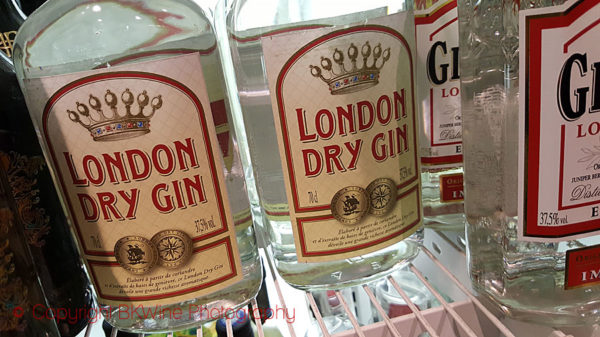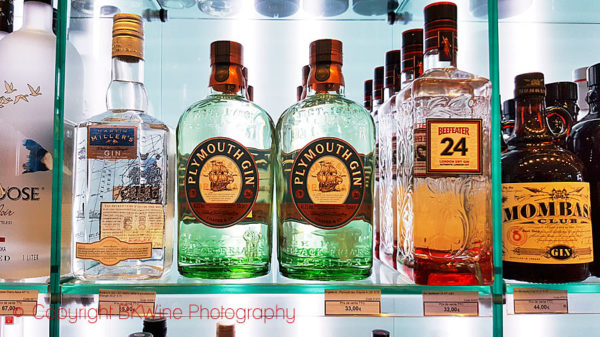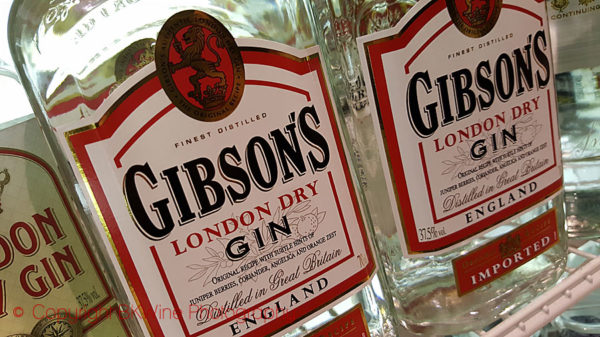The essay in four parts explores the history of gin up until 1985, its production, the revival in consumption over the past 30 years, and looks forward to how the market might develop over the next 10 years. This essay focuses primarily on the UK market although reference is made to other markets where relevant, particularly the US and Spain. The Philippines market, the largest by volume, is addressed only briefly as international brands have a negligible presence and the (declining) market is mainly entry level, “Dutch-style” gin.[1]
The author of this four-part essay is Andrew de Csillery. The essay was written in autumn 2015 as part of the studies and examination for a wine and spirits qualification. The views expressed and the conclusions reached are those of the author alone.
The essay is made up of four parts:
- Introduction and the History of Gin from the Middle Ages to 1985
- Production of Gin, how process variations result in different flavours
- The revival of Gin over the past 30 years
- Conclusions and Commentary, how the category and market may develop over the next 10 years (including appendix and literature list)
Gin is simply defined as a potable spirit flavoured predominantly with juniper, but also with other botanicals, either through compounding or distillation. Its origins date from the 13th century, when juniper was used as a medicine and diuretic. During the Plague years, juniper cordials were consumed and juniper berries were used as a barrier in the erroneous belief that they would protect against the disease.[2] The first written evidence of genièvre (malt wine and juniper distillate) dates from 1552 and juniper-flavoured distillates and spirits were soon widely available throughout the Low Countries.[3]

During the early 17th century, juniper-flavoured spirits were introduced in England by English troops fighting in the Thirty Years’ War. The war interrupted the supply of French cognac, boosting international demand for Dutch grain spirits. Gin production started in the cities of London, Plymouth, Portsmouth and Bristol, supposedly for medicinal purposes.[4] In 1638, the Worshipful Company of Distillers was founded in London and soon gained a local monopoly on the production of all spirits, also setting minimum quality and production standards. Gin had a two-stage production process, not dissimilar to that used today.[5]
The arrival of William of Orange as King of England in 1689 turned gin from a medicine into a fashionable (and patriotic) drink. The blockade of French goods, again restricting cognac supplies, and the Distilling Act of 1690, allowing anybody to distil grain spirit, helped increase production. In 1702, Queen Anne cancelled the charter of the Worshipful Company of Distillers, paving the way for hundreds of back-street distilleries to spring up with no control over production process and quality. This laid the foundations for what became known as the Gin Craze, with London’s population ‘drowning’ in gin.[6] Consumption rose exponentially, reaching a peak in 1743 of the equivalent of every person in London drinking two pints of gin per week. Between 1729 and 1751, parliament tried (and failed) to control the consumption of gin, passing eight “Gin Acts”.[7] Hogarth’s 1751 print of “Gin Lane” is a potent portrayal of the impact on the working population of London.[8]

Consumption collapsed in 1757 when distillation of grain was banned following successive crop failures. Although reversed in 1760, this measure marked a turning point. Higher spirits excise duties increased prices, resulting in beer again becoming the drink of choice for the working poor. Improved regulation resulted in better quality spirit production, the growth of a small number of large, dominant distilleries and eventually a new respectability for gin.[9]
In 1825, the government cut spirits duty and gin consumption doubled to levels not seen since 1743, with so-called “Gin Palaces” competing with the beer pubs. Quality however remained relatively poor. The main style was “Old Tom”, sweetened to mask the harshness of the underlying spirit. The invention of the Coffey still in 1831 allowed distillers to produce a much purer base spirit on a much larger scale. London gin producers were perfectly positioned to produce higher quality gins, using pure local water, grain from the surrounding counties and botanicals from the expanding British Empire. As sugar levels were reduced, a new style emerged that became London Dry Gin.[10]
In 1850, the UK parliament allowed gin to be exported, allowing the development of the US as a key market alongside the British Empire colonies. During the 65 years until WWI, the growing popularity of the cocktail (starting with gin punch, Pimms and then the classic recipes), drove consumption.[11] The UK Defence of the Realm Act of 1915, requiring aged spirits to be matured for at least three years, boosted gin consumption (rectified spirits were exempt). US Prohibition (1919-1933) was also good news for British distillers. The poor quality of bathtub gin resulted in high demand for genuine English gin, which was smuggled in through the West Indies and Canada.[12] From prohibition to 1955, cocktails continued to grow in popularity, a trend briefly interrupted by WWII (the war saw reduced consumption and significant damage to London distilleries, but availability and demand recovered rapidly afterwards).
Between 1955 and 1985, gin, along with the classic cocktail, fell out of fashion. Vodka, which could be mixed easily with anything, became the spirit in vogue and by the early 70s was the most popular spirit in America. In 1985, Time Magazine called the Martini, the most famous gin cocktail, an ‘amusing antique’.[13]
The essay is by Andrew de Csillery made up of four parts:
- Introduction and the History of Gin from the Middle Ages to 1985
- Production of Gin, how process variations result in different flavours
- The revival of Gin over the past 30 years
- Conclusions and Commentary, how the category and market may develop over the next 10 years (including appendix and literature list)

[1] See Appendix 1 for the trends in gin consumption in the top 12 countries since 1990.
[2] Solmonson: Gin: A Global History, Pages 19-22.
[3] Difford, Diffordsguide Gin Compendium, Page 17.
[4] For the sake of clarity, I refer from hereon only to gin, although the first recorded use in the UK of the term gin, rather than genever, was in 1714 (Solmonson, Gin: A Global History, Page 7).
[5] Difford, Diffordsguide Gin Compendium, Page 20.
[6] Its quality and composition bare no comparison with gin today, for example: Recipe for Beaufoy, James & Co. Gin: Oil of vitriol, Oil of almonds, Oil of turpentine, Spirits of wine, Lump sugar, Lime water, Rose water, Alum, Salt of Tartar (Williams, Gin Glorious Gin, Page 33).
[7] Difford, Diffordsguide Gin Compendium, Pages 25-33 and Solmonson: Gin: A Global History, Pages 45-57.
[8] See Appendix 2 for a copy and also of the associated print of Beer St.
[9] Many of today’s well-known brands date from this era: e.g. Greenall’s in 1761, Gordon’s in 1769, Booth’s and Boord’s in 1778, Plymouth in 1793, Tanqueray in 1830, Beefeater in 1863, Gilbey’s in 1867 (Solmonson, Gin: A Global History, Pages 73-76).
[10] Williams, Gin Glorious Gin, Pages 152-154 and Solmonson, Gin: A Global History, Pages 59-73.
[11] Solmonson, Gin: A Global History, Pages 76-94 and Difford, Diffordsguide Gin Compendium, Pages 48-60.
[12] Bathtub gin was made with purified industrial alcohol mixed with juniper oil and glycerine – not dissimilar to what was being consumed during the Gin Craze of the 18th century (Difford, Diffordsguide Gin Compendium, Pages 62-63).
[13] Solmonson, Gin: A Global History, Pages 109-116 and Williams, Gin Glorious Gin, Pages 239-263.











One Response